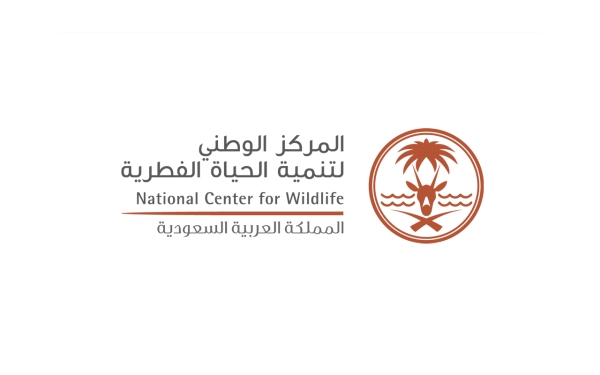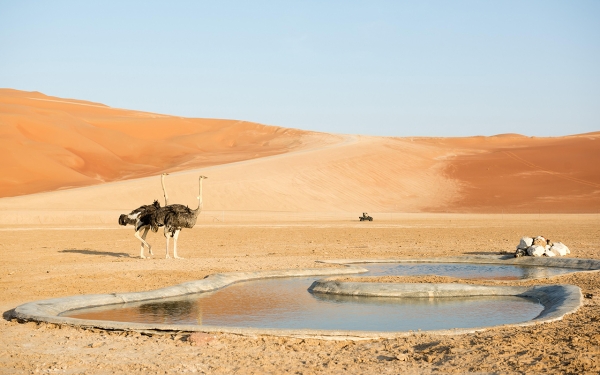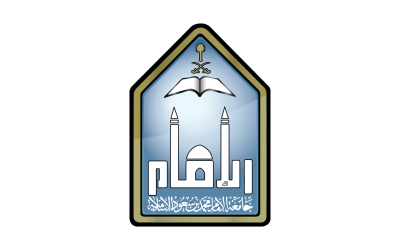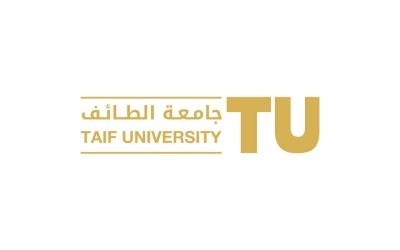


The National Center for Wildlife is the entity responsible for the conservation and development of wildlife and biodiversity in terrestrial and marine environments across the Kingdom of Saudi Arabia. It is also involved in planning and proposing terrestrial and marine protected areas, as well as managing them sustainably, and managing endangered animal breeding centers and their relocation.
Establishment of the National Center for Wildlife
The initial efforts to address the risks facing wildlife in the Kingdom date back to 1986, when a Royal Decree was issued to establish and develop the Saudi Wildlife Authority. In 2019, the Council of Ministers issued a decision to dissolve the authority and establish the National Center for Wildlife. It is one of the four centers approved by the council to be established simultaneously, which include the National Center for Meteorology, the National Center for Vegetation Cover Development and Combating Desertification, the National Center for Environmental Compliance, and the National Center for Wildlife.
The center is headquartered in the capital, Riyadh, and has a board of directors chaired by the Minister of Environment, Water, and Agriculture. The board serves as the governing authority for managing the center and its affairs and making all decisions necessary to achieve its objectives.
Wildlife ecosystem in the Kingdom
The wildlife ecosystem in the Kingdom includes the protection of seventy-five areas, with sixty-two being terrestrial and thirteen being coastal. The center is planned to manage thirty-five reserves, with fifteen currently established and twenty proposed, provided that forty areas are managed by other entities, including the National Parks under the Ministry of Environment, Water, and Agriculture in Riyadh, Aseer, Taif, etc., as well as areas under the Ministry of Municipal and Rural Affairs and Housing, emirates of regions, and the Royal Commission for Jubail and Yanbu, etc. Uruq Bani Ma'arid Reserve is the only place in the world where the Arabian oryx has been reintroduced freely in accordance with the guidelines of the International Union for Conservation of Nature (IUCN).
Mandate of the National Center for Wildlife
The National Center for Wildlife manages several research centers, including the King Khalid Wildlife Research Center in Thumamah, the Prince Saud al-Faisal Center for Wildlife Research in Taif, and the Prince Mohammed al-Sudairy Center for Arabian Oryx Breeding in Qassim. Additionally, it includes the Shelter Center and the Special Collections Unit.
Supervision of the National Center for Wildlife
The biodiversity in the Kingdom is monitored by the National Center for Wildlife and includes seven categories:
Flora: The fungal plant group in the Kingdom consists of 2,247 species belonging to 142 families and 837 genera. Among them, 246 species are native, and 656 species are endangered.
Terrestrial Mammals: There are eighty-six species, including twenty-eight species of bats, twenty-two species of rodents, twelve species of carnivores, and one species of primates (the baboon).
Marine Mammals: There are an estimated sixteen species in the Kingdom's regional waters of the Red Sea and the Arabian Gulf, in addition to nine recorded species of dolphins.
Birds: The total number of recorded bird species in the Kingdom is 499, belonging to sixty-seven families, of which 223 species are breeding.
Reptiles and Amphibians: The Kingdom has recorded 107 species of reptiles and seven species of amphibians. The reptiles include forty-four species of lizards belonging to seven families, fifty-five species of snakes belonging to eight families, and seven species of turtles belonging to four families.
Fish Diversity: In the Kingdom, there are 1,280 species in the Red Sea and 542 species in the Arabian Gulf, including forty-four species of sharks.
Marine Invertebrates: They are the largest group of wildlife in terms of diversity and abundance in the Kingdom.
Fitri Platform, the electronic arm of the National Center for Wildlife
Fitri Platform is the electronic arm of the center, as it provides a range of services, including issuing permits, licenses, certificates, etc. In 1997, the then-Saudi Wildlife Authority established the training center that is currently affiliated with the center. It aims to support the Kingdom’s policy of preserving wildlife and biodiversity by raising the efficiency of professionals' performance.
Related quizzes

